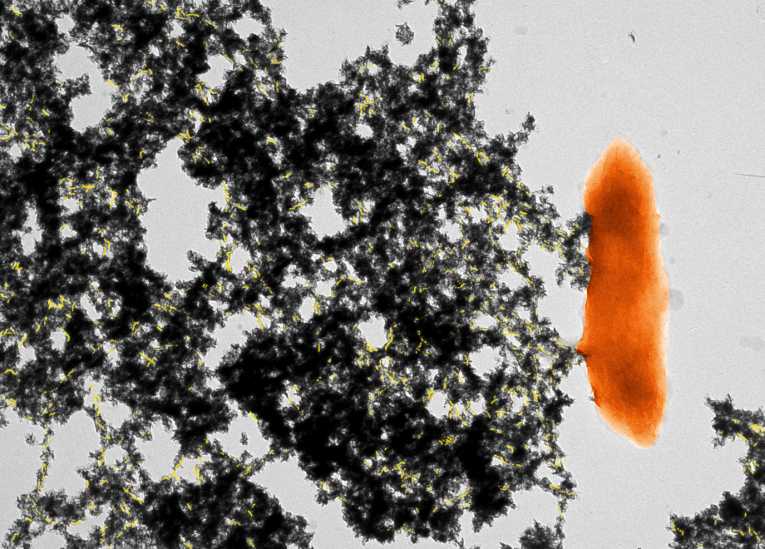A naturally occurring soil bacteria can render toxic uranium in contaminated areas safe.
Researchers at Michigan State University (MSU), have discovered how Geobacter, an ancient form of bacteria can use hair-like structures called microbial nanowires on the exterior of the cell's wall to precipitate out uranium. Once reduced to a black encrustation on the exterior of the filament-like nanowires by the bugs, the uranium is no longer soluble in the groundwater, but bound to the bacterial appendages.
"In this form it is harmless to other organisms. The bacteria have rendered the uranium safe to themselves and in the process immobilised the toxin in the soil," explained lead author Gemma Reguera, "Now that we understand just how they do this, we can work on better ways to enhance these bacterial populations and put them to work in bioremediation of contaminated mining sites or places where uranium was enriched." The microbe is a normal resident of the soil microbiota.The bacterial nanowires are essential to the process and are produced by the Geobacter in response to poor environmental conditions. They permit the microbes to access energy sources outside the cell, much like a plant root system travels through the soil. Understanding just how the bacteria tackle toxic uranium, should help scientists to design better in situ cleanup programmes, important in many mining sites and ex-military test zones.
In the lab the bacteria were exposed to concentrations of uranium that were ten times that usually found in contaminated soils. Only those that had produced nanowires were able to remove most of the toxin, reduce it chemically, and immobilize it, disabling the metal. The team were also able to engineer Geobacter strains that had three times the normal number of nanowires. This strain removed and immobilized three times more uranium. The nanowires also shielded the cell from the toxin and prevented it from entering the cell and killing it. Using a fluorescent dye to measure the activity of the cell's respiratory enzymes the researchers showed that these superbugs had their vital functions intact and also recovered from exposure to uranium much faster than their ordinary cousins.
This research may ultimately replace the need for hugely expensive removal of contaminated soils by stimulating naturally occurring organisms to do what comes naturally.
This study was reported in the Proceedings of the National Academy of Sciences (PNAS) today.
Top Image Caption: Transmission electron micrograph of Geobacter sulfurreducens with black uranium precipitate on the bacterial nanowires (in yellow) produced on one side of the cell. Image Credit: Dena Cologgi and Gemma Reguera (Michigan State University)










